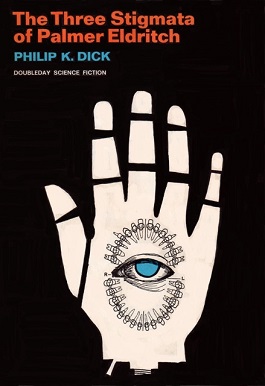
The Three Stigmata of Palmer Eldritch is a 1964 science fiction novel by American writer Philip K. Dick. It was nominated for the Nebula Award for Best Novel in 1965. Like many of Dick's novels, it utilizes an array of science fiction concepts and explores the ambiguous slippage between reality and unreality. It is one of Dick's first works to explore religious themes.

Xenocide(1991) is a science fiction novel by American writer Orson Scott Card, the third book in the Ender's Game series. It was nominated for both the Hugo and Locus Awards for Best Novel in 1992.

Robert James Sawyer is a Canadian and American science fiction writer. He has had 25 novels published and his short fiction has appeared in Analog Science Fiction and Fact, Amazing Stories, On Spec, Nature, and numerous anthologies. He has won many writing awards, including the best-novel Nebula Award (1995), the best-novel Hugo Award (2003), the John W. Campbell Memorial Award (2006), the Robert A. Heinlein Award (2017), and more Aurora Awards than anyone else in history.
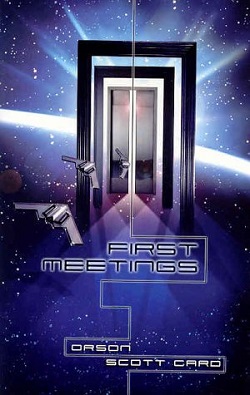
First Meetings (2002) is a collection of science fiction short stories by American writer Orson Scott Card, belonging to his Ender's Game series. Tor Books republished the book in 2003 under the titles First Meetings in the Enderverse and First Meetings in Ender's Universe and included the more recent "Teacher's Pest", a story about the first meeting of Ender's parents.

Tor Books is the primary imprint of Tor Publishing Group, a publishing company based in New York City. It primarily publishes science fiction and fantasy titles.
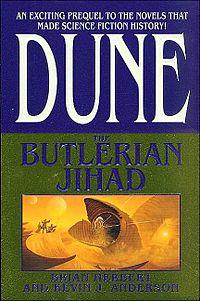
Dune: The Butlerian Jihad is a 2002 science fiction novel by Brian Herbert and Kevin J. Anderson, set in the fictional Dune universe created by Frank Herbert. It is the first book in the Legends of Dune prequel trilogy, which takes place over 10,000 years before the events of Frank Herbert's celebrated 1965 novel Dune. The series chronicles the fictional Butlerian Jihad, a crusade by the last free humans in the universe against the thinking machines, a violent and dominating force led by the sentient computer Omnius.

The Skylark of Space is a science fiction novel by American writer Edward E. "Doc" Smith, written between 1915 and 1921 while Smith was working on his doctorate. Though the original idea for the novel was Smith's, he co-wrote the first part of the novel with Lee Hawkins Garby, the wife of his college classmate and later neighbor Carl Garby. The novel starts as an edisonade, but turns into a space travel adventure when the characters go into deep space. The Skylark of Space is considered to be one of the earliest novels of interstellar travel and the first example of space opera. Originally serialized in 1928 in the magazine Amazing Stories, it was first published in book form in 1946 by the Buffalo Book Co. The novel was followed by three sequels, beginning with Skylark Three.
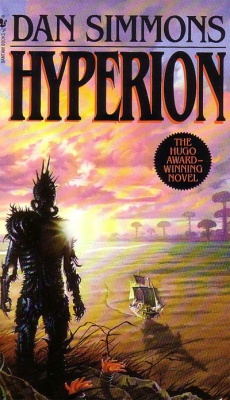
Hyperion is a 1989 science fiction novel by American author Dan Simmons. The first book of his Hyperion Cantos series, it won the Hugo Award for best novel. The plot of the novel features multiple time-lines and is told from the point of view of many characters. It follows a similar structure to The Canterbury Tales by Geoffrey Chaucer. A framing narrative serves as a means to present the tales of a group of pilgrims sent to Hyperion's time tombs, to make a request of the Shrike, a metallic creature that is said to grant one wish to each pilgrim. The story is continued in The Fall of Hyperion, published in 1990.

Adam Stemple is a Celtic-influenced American folk rock musician, based in Minneapolis, Minnesota. He is also the author of several fantasy short stories and novels, including two series of novels co-written with his mother, writer Jane Yolen.
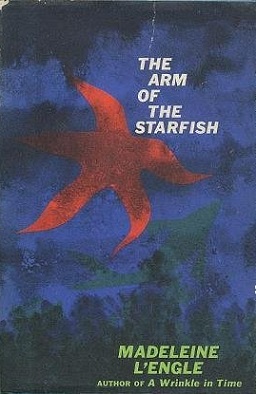
The Arm of the Starfish is a young adult novel by Madeleine L'Engle, first published in 1965. It is the first novel featuring Polly O'Keefe and the O'Keefe family, a generation after the events of A Wrinkle in Time (1962). The plot concerning advanced regeneration research puts this novel in the science fiction genre, but it could also be described as a mystery thriller.

Kobra is the name used by two supervillains published by DC Comics. The Jeffrey Burr incarnation of Kobra and his brother Jason first appeared in Kobra #1, and were created by Jack Kirby. Jason Burr debuted as Kobra in Faces of Evil: Kobra #1 by Ivan Brandon and Julian Lopez. The Kobra identity is later established as an international terrorist organization that frequently clashes with superheroes associated with the Justice League.

Kalki is a 1978 pre/post-apocalyptic novel by American author Gore Vidal.
"Shockwave" is a two-part episode of the television series Star Trek: Enterprise. Part one is the first-season finale, the twenty-sixth episode, and part two is the second season opener, the twenty-seventh episode. Because of this, common to the Star Trek franchise in this period, part one aired on UPN on May 22, 2002, with a cliffhanger ending, but it was nearly four months before the second part aired on September 18, 2002.

The Other Log of Phileas Fogg is a science fiction novel written by American author Philip José Farmer in 1973. Reviving the Phileas Fogg character created by Jules Verne, the novel has also been classified as steampunk and a parallel novel. It was originally published by DAW Books and later reprinted in 1979 by Hamlyn and again in 1982 by Tor Books. Tor has subsequently reissued the novel in 1988 and 1993.
"Ender's Game" is a science fiction novelette by American writer Orson Scott Card. It first appeared in the August 1977 issue of Analog magazine and was later expanded into the 1985 novel Ender's Game. Although it serves as the foundation of the Ender's Game series, the novelette is not considered to be properly a part of the Ender's Game universe, as there are many discrepancies in continuity between it and the novel.

Barrayar is a science fiction novel by American writer Lois McMaster Bujold. It was first published as four installments in Analog in July–October 1991, and then published in book form by Baen Books in October 1991. Barrayar won both the Hugo Award for Best Novel and the Locus Award for Best Science Fiction Novel in 1992. It is a part of the Vorkosigan Saga, and is the seventh full-length novel of the series, in publication order. Barrayar is a direct sequel to Bujold's first novel, Shards of Honor (1986), and the two are paired in the 1996 omnibus Cordelia's Honor.

The Saga of Shadows is a trilogy of space opera novels written by Kevin J. Anderson. First announced in 2011, it is a sequel to Anderson's seven-book series, The Saga of Seven Suns (2002–2008). The first novel, The Dark Between the Stars, was released by Tor Books on June 3, 2014. The second book in the series, Blood of the Cosmos, was published on June 2, 2015. The third novel, called Eternity's Mind, was released on September 13, 2016.

Station Eleven is a novel by the Canadian writer Emily St. John Mandel. It takes place in the Great Lakes region before and after a fictional swine flu pandemic, known as the "Georgia Flu", has devastated the world, killing most of the population. The book was published in 2014, and won the Arthur C. Clarke Award the following year.

A Desolation Called Peace is a 2021 space opera science fiction novel by Arkady Martine. It is the sequel to A Memory Called Empire, and the second novel in Martine's Teixcalaan series. Like its predecessor, the book won the Hugo Award for Best Novel, in 2022.
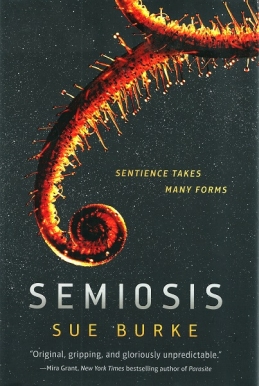
Semiosis is a 2018 science fiction novel by American writer and translator Sue Burke. It is her debut novel and is the first book of her Semiosis Trilogy series. It was first published in February 2018 in the United States by Tor Books, and in August 2018 in the United Kingdom by HarperVoyager. The book was translated into French by Florence Bury, and published in France in September 2019 by Albin Michel.


















